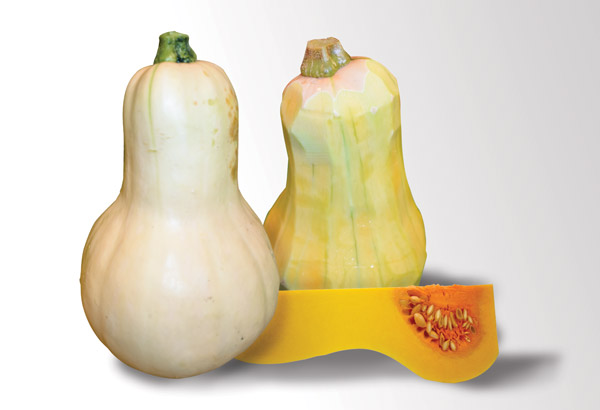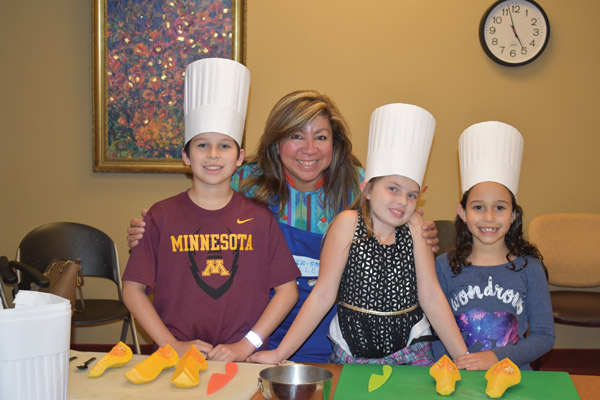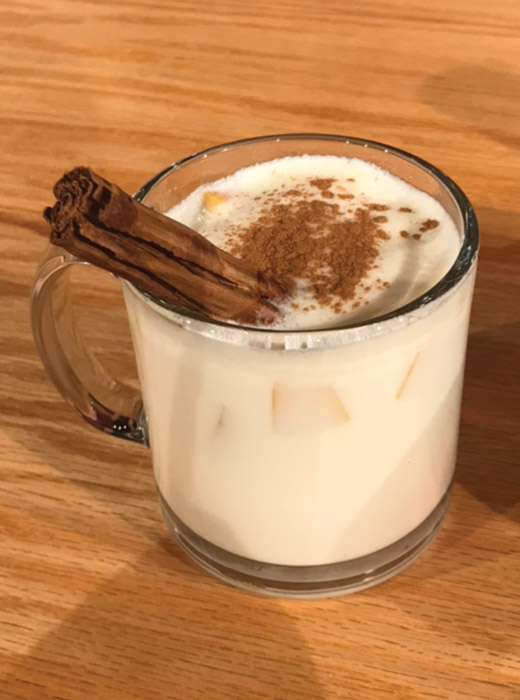Falling for Squash in Guatemala
I grew up eating squash in Guatemala and learned to appreciate the local varieties because they are part of many preparations, from soups and stews to candied styles.
Cooking with squash is easy, as the fruit lends itself to many preparations from savory and sour, to sweet.
Squash is available year-round in the U.S., but I love fall harvest season because it brings so many varieties of gourds and squash. Squash is categorized as spring, summer and winter types that correspond with the planting and harvesting season.
Pumpkin is by far the most recognizable winter squash that signals Halloween and Thanksgiving. Some of my favorites include butternut, acorn and spaghetti because of their texture and flavor. The beauty of cooking with these is that they cook fast and take on any flavor you add to them.
I enjoy Latinizing my squash preparations and recently prepared a hot milk punch for a healthy cooking session with kids 8-14 in partnership with the Super Bowl Host Committee Legacy Fund in Minnesota. I used to drink ponche de leche (recipe below), which was made with ayote, when I was a little girl and lived in Quezaltepeque, Chiquimula. Ayote from this region resembles the texture and flavor of zucchini squash and cooks even faster than winter varieties in the U.S.
Ponches (plural) are popular hot drinks throughout Guatemala along with atoles. Ponches are thin while atoles are medium thick preparations containing milk or fresh fruit, and ground corn or pureed fruits and roasted dried legumes or grain, respectively.
Ponches and atoles are enjoyed by locals at parks and plazas during fairs, festivals and the holidays. I like to make them in the U.S. during the cold weather months, as this is the time when they are most appreciated by many. This too gives me the opportunity to use local ingredients that resemble the flavors that I enjoyed during my childhood.
Besides easy cooking, another benefit of integrating squash into one’s diet is that it is packed with nutrients and fiber.
Squash is one of the three main ancient native crops that we share in the North American and Mesoamerican region and are an integral part of the triad “three sisters” (squash, corn and beans), which constitute the most important crops of the area because of their complementary nutritional value. They are the perfect vegan diet. When planted together they thrive much like inseparable sisters.
Whether you are in the U.S. or Guatemala, I invite you to enjoy a cup of ponche as a snack or spiked with your favorite rum as a party drink.
PONCHE DE LECHE
Almond and Cinnamon Hot Punch
Recipe by Chef Amalia Moreno-Damgaard
AmaliaLLC.com
This delicious hot punch is inspired by my grandmother’s ponche de leche (milk punch). Sometimes she added diced baby squash to the hot mixture. This was often our mid-morning or after-school drink. For a delicious adult version, add a bit of rum to each cup at the time of serving. Try adding Zacapa Centenario Guatemalan rum, or spike it with Indita aguardiente for quite a different yet delicious twist.
Serves 2 people
1 1/2 cups skim milk
1/4 teaspoon almond extract
1/4 stick canela (Ceylon cinnamon)
3 teaspoons sugar
Pinch of kosher salt
1 cup small diced butternut squash
1 egg, separated
Ground canela (Ceylon cinnamon)
In a medium saucepan, combine the milk, almond extract, cinnamon, sugar and salt, and bring to a quick boil. Keep a close eye, as milk can scorch and boil over easily. Add the squash. Lower the heat and simmer until aromatic (about 10 minutes). Discard the cinnamon stick.
Beat the egg white until soft peaks form. Add the yolk and continue beating to combine. Temper the egg mixture with 1 tablespoon of the hot milk and whisk quickly. Add 2 more tablespoons gradually and whisk until runny. Pour the egg mixture* gradually into the hot milk while whisking quickly. Use a soft spatula to scrape out every bit of egg mixture. Continue whisking until medium thick and bubbly (2 to 3 minutes). Turn off the heat. *Alternatively, top each mug with the mixture at serving time.
Serve the punch in tall clear mugs and sprinkle the tops with ground cinnamon.
Amalia’s Notes
Tempering is necessary to prevent the egg yolks from curdling when they hit the hot milk. Adding a little hot milk to the mixture first prepares it to thicken the milk more effectively.Try other kinds of summer and winter squash. Soft skinned squash should not be peeled to retain its nutrients. Harder skinned squash should be first peeled and then diced.
REVUE magazine article by Chef Amalia Moreno-Damgaard
Amalia Moreno-Damgaard is an award-winning bestselling chef author born and raised in Guatemala City currently living in the Twin Cities. She provides individuals and companies with a taste and understanding of Latin cultures through healthy gourmet cuisine education, consulting, bilingual speaking and writing and fun culinary experiences.
Her cookbook “Amalia’s Guatemalan Kitchen-Gourmet Cuisine With A Cultural Flair” has won 9 international awards. AmaliaLLC.com


